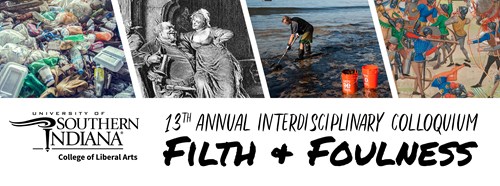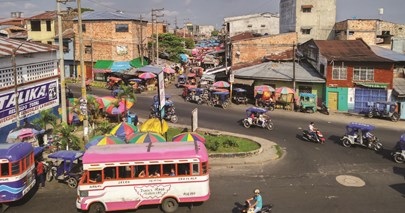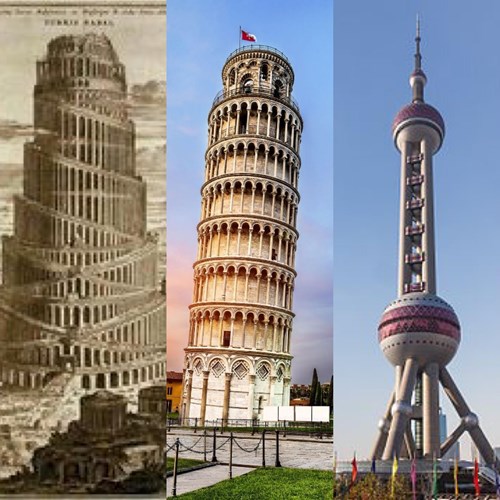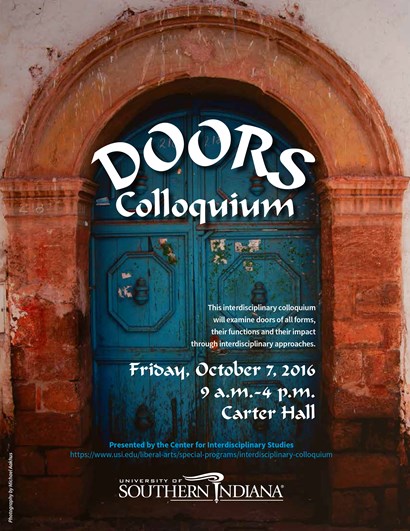Click a colloquium theme below to see descriptions and a list of presentations that year.
2021, Filth & Foulness >>

Our relationship to filth is long, deep, and meandering. Unsanitary environments have contributed to epidemics such as the Bubonic Plague, and have similarly exacerbated misery in the sprawl of urbanization. Filth can function as a metaphorical damnation or critique: as Saint Augustine would suggest, we are baptized in filth from the moment we are born. This sentiment not only taints humans as unclean sinners from infancy, but evokes the long, troubling equation between female sexuality, motherhood, and uncleanliness.
However, our rapport to that which is proclaimed as filthy is not always detrimental to our physical or spiritual wellbeing. Though terms such as "filth" and "foulness" may carry overriding negative connotations, a compelling subset of cases equally suggest that the things which disgust us are not necessarily bad. When one considers the numerous books that have been banned or deemed immoral due to the metaphorical filth they contain, it becomes clear that their dirtiness is frequently symptomatic of innovation and the ability to push boundaries.
Whether symbolic or actualized, filth and foulness evidence complex and often fraught relationships within the world and ourselves. This colloquium aims to examine the myriad positive and negative connotations of filth, and how humanity can both thrive and suffer from these dynamic relationships.
Presentations
2019, Movement >>

Movement is an intrinsic part of the world. From the flutter of a butterfly’s wings, to the technology that shapes our lives, to changes in politics and paradigms, movement involves creation, transformation, and vision. The 12th Interdisciplinary Colloquium seeks to address the topic of movement(s) from a variety of disciplinary perspectives. Contributors to the Colloquium bring their unique insights to this theme while acknowledging how movement, in its distinct forms and manifestations, is fundamental to our world.
Presentations
Dr. Martinus Koen, Assistant Professor of Criminal Justice, “Case Study of Implementation of Body-Worn Cameras at a Single Police Agency.”
Dr. Bartell Berg, Assistant Professor of German, “Out of this World! The Semmeringbahn as Exhilarating Motion in Austrian Culture.”
Dr. Grace Howard, Assistant Professor of Gender Studies, “The Pregnancy Exceptionalism Road Trip.”
Dr. Perry Burnett, Associate Professor of Economics, “The Road to Happiness is Paved with Deception.”
Dr. Kimberly Delaney, Assistant Professor of Biology, “Cells On The Move: A look at Movement at the Cellular Level.”
Dr. Steven Williams, Associate Professor of Sociology, “Social Movements and University Students: Can They Still Save the World?”
Dr. Joy Santee, Assistant Professor of English, “Meatbags to Bodyminds: Embodied Rhetorics and the Promotion of Engaged Interdisciplinary Research.”
Dr. Andrew Buck, Associate Professor of Sociology, “How to Stop Social Movements.”
Ms. Al Holen, Associate Professor of Ceramics, “Movement Real and Implied.”
Dr. Denise Lynn, Associate Professor of History, “Yoga Posturing: Indian Nationalism and American Yoga Practices.”
Dr. Erin Reynolds, Assistant Professor of Health Services/Administration. “Understanding Health Literacy in a Population with Chronic Kidney Disease
Mr. Elliot Wasserman, Professor of Theatre and Mr. Eric Altheide, Assistant Professor of Theatre. “Movement as Meaning in Theatre.”
Mr. Thomas Drury, Instructor of Music, “Dance Music of Ireland: Movement in Time and Space.”
Mr. Matthew Graham, Professor of English, “Original Poetry.”
2017, Towers >>

“I found myself in a tower, whose foundations were sunk so deep into the earth and whose top was so lofty, reaching up like a spire into the sky, that my whole existence already seemed bound to be consumed up and down it.” (Gérard de Nerval, Aurélia)
The Towers Colloquium featured a performance by the University of Southern Indiana Chamber Choir, under the direction of Mr. Daniel Craig, Associate Professor of Music, and original artwork by Michael Aakhus, Brittney Byrd, Tylar Dean, Joan deJong, Sarah Feagan, Danielle Lents, Gabe Mayer, Rob Millard Mendez, Steven Miller, Levi Schulz, Brian Simpson, Logan Tharp, Glen Tyler, Kathryn Waters, and Katy Whitehouse.
Presentations
Dr. Abigail Alexander, Assistant Professor of French, “Same Towers, Different Gods: Saving Notre-Dame de Paris”
Dr. Srikanth Dandotkar, Assistant Professor of Psychology, “Towers, Signals, and Information Processing: Humans as Informavores (like herbivores and carnivores), and Human Minds as Cellphones”
Mr. John Gibson, Original Poetry
Mr. Matthew Graham, Professor of English, Original Poetry
Dr. Matthew Hanka, Associate Professor of Political Science, “The Towering Ego of the Trump Presidency: Will it Fall?”
Ms. Jennifer Horn, Instructor of English, “Climbing the Fairy-Tale Tower to ‘Happily Ever After’ in Contemporary Times”
Dr. Cacee Hoyer, Assistant Professor of History, “The Unbalanced Minaret: the Juma Masjid Mosque, Durban’s divided Indian Community, and Challenges to Early Anti-apartheid Resistance”
Dr. Sakina Hughes, Associate Professor of History, “Women of Color in the Ivory Tower”
Dr. Jill Oeding, Professor of Business, “Be a Tower of Integrity: Stand Out from Your Peers in a Good Way”
Dr. Norma Rosas-Mayen, Associate Professor of Spanish, performance of music of the Sephardic Jews of North Africa and the Middle East
Dr. Constance Swenty, Associate Professor of Nursing, Assistant Dean of Nursing, “Healthcare Teams Connect Communication Towers”
Dr. Steven Williams, Associate Professor of Sociology, “The Fall of Tower Records and the Death of the Artifact”
Roundtable
“Doors into Disciplines” with Dr. James Beeby, Dean of the College of Liberal Arts (Moderator), Dr. Glenna Bower, Professor of Kinesiology and Sport, Dr. Gabriela Mustata Wilson, Associate Professor of Health Informatics, Dr. Todd Schroer, Associate Professor of Criminal Justice, and Dr. Sarah Stevens, Interim Director of University Honors Program
2016, Doors >>

"If the doors of perception were cleansed, everything would appear to man as it is, infinite." The inter-referential trajectory of the William Blake quote moves doors freely through historical experience, linking a late 18th-century poetic imitation of the Bible to the modern musings of mid-20th-century psychedelic memoir to the popular realm of rock music. Doors are emblematic of barriers and opportunities, of social oppression and forward movement, of bright beginnings and obscure conclusions. Open doors can be promising in offering access to spaces known and unknown, while closed doors may produce feelings of frustration, security, excitement, bitterness, conclusion, and even peace. Sometimes doors are simply benign. As the poet Marge Piercy observed, “Maybe there is more of the magical/in the idea of a door than in the door/ itself.”
Dr. Bartell Berg, Assistant Professor of German, “A Community at the Precipice: Thresholds to Forgiveness and Emancipation in Marie von Ebner-Eschenbach’s Das Gemeindekind”
Dr. C. Elizabeth Bonham, Associate Professor of Nursing, “The Clang of the Steel Door”
Dr. Trent Engbers, Assistant Professor of Political Science and Public Administration, “Opening Doors Through Social Capital”
Dr. Chad Gonnerman, Assistant Professor of Philosophy, “On Not Opening Some Doors in Philosophy”
Dr. Sukanya Gupta, Assistant Professor of English, “Imperial Doors: Crossing the ‘Kalapani’ as a Coolie Woman”
Dr. Mark Krahling, Associate Professor of Chemistry, Associate Dean of the Pott College, “Precisely What Life Needs: A Revolving Door for Packaging Energy”
Dr. Erin Reynolds, Assistant Professor of Health Services/Administration, “Social Networks as Doors to Health Care”
Dr. Daria Sevastianova, Associate Professor of Economics, “The Revolving Door: International Migration and the Rise of Populism”
Dr. Melissa Stacer, Associate Professor of Criminal Justice, “New Opportunities or Closing Doors? How Correctional Facility Tours Impact Students’ Thoughts about Careers”
Dr. Steven Williams, Associate Professor of Sociology, “Doors of Perception Opened and Closed: LSD, Marijuana, Magic Mushrooms, and the Era of Psychedelic Music”
Roundtable:
“Doors into Disciplines” Dr. James Beeby, Dean of the College of Liberal Arts and Professor of History (Moderator), Dr. Molly Brost (English), Dr. Betty Hart (English), Dr. Mari K. Hopper (Cellular and Integrative Physiology), and Dr. Rick Hudson (Mathematics).
2013, Roads >>
Roads provide a means of conveyance from one point to another. They have been used to exchange goods and services, ideas and information. Roads facilitate the movement of individuals and groups to and from destinations both nearby and distant. Whether well-trodden pathways or modern superhighways, roads and road networks have provided the thoroughfares that have expedited both war and peace, sparked cultural, political, and religious revolutions, and provided inspiration to artists, musicians, and poets. Moreover, our understanding of the human body and the universe, specifically the conduits permeating both, has been the catalyst for countless scientific revolutions.
This interdisciplinary colloquium examined roads and pathways of all forms, their functions and their impact through interdisciplinary approaches.
The Roads Colloquium featured photographs by Joan deJong, Katie Waters and Kristen Wilkens.
Presentations
Dr. Kevin Allton, English "Dawn of the Sandman"
Dr. Daniel Bauer, Anthropology, "The Road to Representation: Becoming Indigenous in Coastal Ecuador"
Dr. David Black, Radio and Television, Film Screening, In Harmony’s Way: The Battle to Save a Bridge
Dr. Perry Burnett, Economics, "Roads, Reasons and Rumblings"
John Gibson, Latin, Original Poetry
Matthew Graham, English, Original Poetry
Dr. Casey Harison, History, "'Taking the Hard Road': Migrants on the Road to Paris"
Emily Holt, Dental Hygiene/Assisting, "Oral Cancer Prevention Meets the Road to Recovery"
Dr. Alan Kaiser, University of Evansville, "How Roman Roads Changed Roman Lives"
Dr. Oana Popescu-Sandu, English, "When Odysseus Needs No Visa: Space and Culture in the Global World"
Dr. Shannon Pritchard, Art, "Caravaggio’s Madonna di Loreto and the Symbolic Pilgrimage to Loreto"
Dr. Christopher Rivera, International Studies, "InterCultural Crossroads: Narrating the Migratory Experiences of Objects and Subjects in Motion"
Dr. Mayola Rowser, Nursing, "University of Southern Indiana School-Based Community Health Center"
Dr. Kent Scheller, Physics, "One Road, Many Vehicles—Our Path to Scientific Knowledge"
Ellen Claire Topper, International Studies, "The Road to International Human Rights"
Daniela Vidal, Center for Applied Research and Economic Development, "A Road Back Home: How can I-69 stop the Braindrain in Southern Indiana?"
Marcus Wicker, English, Original Poetry
Dr. Steven Williams, Sociology "The Open Road and Rock n Roll: White, Male, Middle-Class Adventure"
2011, The River >>
The River Colloquium examined various rivers from diverse perspectives, including the Mississippi River as an icon of African American culture, its role in the work of Melville and Mark Twain, and the delicate relationship between the quest for cheap energy and upstream flood control. The Ganges served as a locus for thinking about Yoga as a journey, and as a search for community at its banks. The Thames was featured as a force in shaping the culture of London. The Ohio was featured in an historian’s discussion of the Flood of 1937, and in original works by poets and fiction writers. A geologist discussed how rivers change, like people, through time and space.
The Colloquium was part of a regional celebration of the Steamboat Bicentennial and featured a musical presentation on rivers by the Chamber Choir, directed by Dan Craig.
Presentations
Presentations
Patricia Aakhus, International Studies, Original Works
Dr. Niharika Banerjea, Sociology, "Searching for Community at the Banks of the River: Middle-class Women and Same-Sex Desires in Kolkata"
Leisa Belleau, English, Original Works
Dr. Paul Doss, Geology, "Rivers, Dirt, Fish, and Growing Old: a Perspective on Space and Time"
Dr. Brandon Eggleston, Health Professions, "Find the River"
John Gibson, Latin, Original Works
Matthew Graham, English, Original Works
Dr. Mary Hallock Morris, Political Science, "The Mississippi River Watershed: How Upstream Policies and Downstream Disasters Affect Us"
Dr. Betty Hart, English, "Deep River"
Dr. Tamara Hunt, History, "London's River, London's History"
Nicole Reid, English, Original Works
Dr. Robert Reid, History, "The Great Flood of 1937: The Katrina of the Twentieth Century"
Dr. Michael Kearns, English "Moral Compasses on the Mississippi, as Dramatized by Mark Twain and Herman Melville"
2010, Masks >>
Presentations
Michael Aakhus, Art, "Masks of Mexico and Central America in Ritual and Dance"
Dr. James Bandoli, Biology, "Natural Masks"
John Gibson, Latin, Original Poetry
Matthew Graham, English, Original Poetry
Dr. Betty Hart, English, "We Wear the Mask: Blackface and Minstrelsy"
Dr. Susanna Hoeness-Krupsaw, English, "Veiled and Sequestered but not Silenced: The Women Writers of Heian Japan"
Dr. Tamara Hunt, History, "Masking and Unmasking: Late Georgian Caricature and Public Opinion"
Josephina Kiteou, International Studies, "Performance in Masks: Concealment and Revelation in the Ancient Greek Theater"
Dr. Todd Schroer, Sociology, "The Evolution of 'Masks' Within the White Racialist Movement: From Hoods to Suits"
Dr. Steve Williams, Sociology, "Facebook or Maskbook: Social Networking and Impression Management"
Nicole Reid, English, Original Prose
2009, Islands >>
Presentations
Irish Traditional Music was provided by Daniel Craig and friends.
Irish Traditional Music was provided by Daniel Craig and friends.
Patricia Aakhus, International Studies, "Into the West: Early Irish prose and poetry"
Dr. Oana Armeanu, Political Science, "Pirates between fiction and reality: from Treasure Island to Somali Pirates"
Dr. Sherry B. Darrell, English, "Songs of Scotland's Highlands and Islands"
Dr. Michael Dixon, History, "Mainland Metropolis and Island Colony: Timoleon of Corinth's Expedition to Sicily"
John Gibson, Latin, Original Poetry
Matthew Graham, English, Original Poetry
Dr. Mary Hallock Morris, Political Science, "Floating among the reeds: The impact of ecotourism on the islands of Lake Titicaca"
Dr. Jason Hardgrave, History, "The Islands and Identity of Venice, Italy"
Dr. Betty Hart, English, "Graveyard Dirt and Other Poisons: Zora Neale Hurston in the Caribbean"
Dr. Susanna Hoeness-Krupsaw, English, "Island of Hope or Despair?"
Josephina Kiteou, International Studies, "Aphrodite's birthplace on the island of Cyprus: a journey of the goddess' beginnings"
Dr. Brian Posler, Political Science, "The Dominican Republic's Quest for Identity"
Dr. Stephen Spencer, English, "From Hawaiian Music to Rock and Roll: A Lesson in Cultural Appropriation"
2008, The Great Wall and Other Barriers >>
The Great Wall and other Barriers Colloquium looked at boundaries that divide, protect, enclose and exclude, producing a frontier along which diverse cultures meet, find conflict, exchange and transformation. USI faculty discussed the effects of the Great Wall of China on the environment, evidence of cultural exchange along Hadrian’s Wall, the impact of the walls of China, Rome, the prehistoric Midwest, Constantinople, Berlin, the Mexican-U.S. border, Israel and the Iron Curtain. The Great Wall and other Barriers include Shakespeare's walls to chemical walls to virtual walls.
The collouquium featured photography by Xinran Hu, Katie Waters, Joan Kempf De Jong, Steve Small, Vicki Small, Michael Aakhus, and Patricia Aakhus.
Presentations
Patricia Aakhus, International Studies, "Hadrian's Wall: Conquest and Devotion"
Dr. Oana Armeanu, Political Science, "The Iron Curtain: from Stalin to Gorbachev"
Dr. Sherry B. Darrell, English, "O'erleaping Shakespeare's Walls"
John Gibson, Latin, Original Poetry
Matthew Graham, English, Original Poetry
William Graves, Humanities, "Something there is that doesn't love a wall...but it's not the Roman Empire"
Dr. Mary Hallock Morris, Political Science, "Behind the Great Wall: the Impact of Dam Construction in China"
Dr. Mark Krahling, Chemistry, "Is that a Wall or a Window?"
Dr. Leslie Roberts, French, "The Wailing Wall and the Separation Fence"
Dr. Silvia Rode, German, "Living with The Wall: A Personal History on Global Perspectives"
Dr. Michael Strezewski, Anthropology, "Walls and Warfare in the Prehistoric Midwest"
Dr. Chad Tew, Journalism, "The Virtual Wall: The Making of a Global Village through Social Networking"
Dr. Steven Williams, Sociology, "Barbarians at the Gate: Immigrant Hysteria and the Great Wall of Mexico"
2007, The Gothic Imagination >>
The first "Gothic" cathedral, St. Denis in Paris, was constructed as a visual representation of divine light; "High Gothic" architecture incorporated fantastic elements from medieval manuscript illumination, Celtic and Norse metalwork. Associated with pagan or barbarian art during the Renaissance, the gothic sensibility flourished in "grotesques" painted by Raphael and others, appearing in the Romantic, Symbolist, Surrealist and Modernist movements as fantastic and macabre. Whether manifested in margin illuminations in a medieval Book of Hours or in a magical realist novel, the Gothic imagination aims to make the invisible world visible. It delights in the natural world as irrepressible, irrational, diverse and fantastic, with an ironic sense of its dark side.
Presentations
Dr. Roger Wieck, Curator of Medieval and Renaissance Manuscripts at the Pierpont Morgan Library, Special Guest Lecture
Patricia Aakhus, International Studies, "Werewolves, Sirens and Gorgons: Monsters in the Margins"
Dr. Christopher Bloom, Psychology, "Things That Go Bump in the Brain: Gothic Horror and the Study of Fear"
Daniel Craig, Music, The Schola Cantorum
Dr. Sherry Darrell, English, "A Saint, a Pint, and a Dragon"
John Gibson, Latin, Original Poetry
Dr. Jason Hardgrave, History, "Gothic Context, Cultural Contact, and Crusades"
Dr. Susanna Hoeness-Krupsaw, English, "The Haunts of History in E. L. Doctorow's The Waterworks"
Dr. Tamara L. Hunt, History, "Political Dreamscapes and Nightmares: Variations on Fuseli's The Nightmare"
Dr. Michael Kearns, English, "Emily Dickinson's Ghastly Gothic"
Dr. Carol MacKay, French, "Light and the Genesis of the Gothic Cathedral"
Dr. Betsy Passmore, English, "Rotting Corpses and Mourning Lovers: The Gothic World of Medieval Romance"
Dr. Daniel Scavone, History, "Atlantis: Gothic & Platonic"
Dr. Leslie Roberts, French, "The Golem and the Dybbuk: Jewish spirits and demons"
2006, The Day of the Dead >>
The Day of the Dead Colloquium took place on the first day of a festival celebrated worldwide but with the most vibrant and elaborate extant celebrations in Mexico, assimilating indigenous and European customs. The festival traditionally reserved to honor the dead also marked the end of harvest season, and a stage in transhumance when herd animals were moved from summer to winter pastures. Thus, as shepherds came down from the mountains, families were reunited, while ancestral spirits were reunited with the living. In Ireland, for example, where All Soul's Day was known from the early Christian era as Samhain, meals were left out for the dead and chairs were set around the fire. Doors and gates were left open to allow animals and spirits to pass through, prisons were emptied, no one could be arrested, bonfires were set at crossroads, and the wearing of masks overturned the hierarchy of social status. Similarly, the medieval Danse Macabre portrayed skeletons dancing with people of all social ranks: paupers, kings, bishops, doctors, men and women. Death was the great leveler: all were equal before him.
The Colloquium featured an exhibition of paintings by Michael Aakhus, photographs by Audrey Glassman, Michael Aakhus and Pat Aakhus, as well as Day of the Dead memorial installations, with flowers and photographs of departed friends and family of the USI community.
Presentations
Michael Aakhus, Art, "Quetzalcoatl and the Lords of the Underworld"
Patricia Aakhus, International Studies, "Samhain and the Danse Macabre: Boundaries, Hierarchy and Revolt--European Origins of All Soul's Day"
Dr. Christopher Bloom, Psychology, "Terrified: The Neuroscience of Voodoo Death"
Dr. Hilary Braysmith, Art, "El Dia de los Muertos: A Celebration of Civil Rights"
Dr. Ken Carter, Psychology, "Burial Rituals and the Birth of Consciousness"
Dr. Sherry Darrell, English, "Young, Courteous, Brave SWMK Seeks Tall, Headless, Hilarious MGMK - for Game of Beheading"
Dr. David Hitchcock, Spanish, "Laughing in the Face of Death: Black Humor in Contemporary Mexican Literature"
Dr. Teresa Huerta, Spanish, "Death as a Mirror of Life in Octavio Paz's The Labyrinth of Solitude"
Dr. Tamara Hunt, History, "Talking to the Dead? The Rise of Spiritualism in the Victorian Era"
John Gibson, Latin, Original Poetry
Dr. David Glassman, Anthropology, "Death, Burial, and Cosmology among the Prehistoric Maya of Mesoamerica"
Jim McGarrah, English, Original Poetry
Dr. Leslie Roberts, French, "The Tibetan Book of the Dead"
2005, The Ram in the Thicket >>
The Ram in the Thicket is one of many stunningly beautiful art objects made of gold, lapis and shell circa 2600 BCE at UR, the legendary birthplace of Abraham. This interdisciplinary colloquium examined inherited shared cultural motifs from the Cradle of Civilization, their origins and manifestations from the time of the Ram in the Thicket to the present. Some topics included: The Epic of Gilgamesh; Sumerian mythology; the goddess in Sumerian, Akkadian and early Hebrew traditions; the first poet, Enheduanna, 2300 BCE; French and English influence in the Middle East; contemporary journalism in the Middle East; veiling practices and gender issues; father-son relations in patriarchy; sacrifice in the Old Testament; and belief in the afterlife. The colloquium investigated the rich heritage of the Middle East, from its earliest beginnings in the creation of writing, urban life, western religion, poetry, metallurgy, science and medicine, which is our cultural inheritance in the present.
The colloquium included an art exhibit by Michael Aakhus and Carolyn Roth.
Presentations
Patricia Aakhus, International Studies, Reading of essay on Ur
Dr. Charles Barber, Political Science, "British and French Impacts on the Middle East: Three Phases of Influence, 1905 to 2005"
Dr. Sherry B. Darrell, English, "Secrets and Forbidden Places"
Eric Von Fuhrmann, Humanities, "Sumerian Mythology"
John Gibson, Latin, Original Poetry
Dr. John Gottcent, English, "The Silence of Abraham"
Dr. Maurice Hamington, Philosophy, "Gilgamesh in the 24th Century"
Jim McGarrah, English, Original Poetry
Dr. Richard R. Mussard, Philosophy, "Wisdom Literature and the Quest for Wisdom: Babylon and Beyond"
Dr. Leslie J. Roberts, French, "The Female Face of God: Enheduana's poems to Inanna and the Shekinah of Hidden Jewish texts"
Dr. Chad Tew, Journalism, "The New Information War: The Role of the Internet in the Co-construction of War"
Dr. Steve Williams, Sociology, "The Rights of Women in the Middle East: When is it "Our" Business?"
2004, The Parthenon >>
The Parthenon Project was an International Interdisciplinary Colloquium featuring lectures and exhibitions from various disciplines following the Summer Olympics in Athens.
Paintings of the Parthenon frieze by Michael Aakhus was exhibited, as well as photographs by Patricia Aakhus, former director of International Studies.
Presentations
Patricia Aakhus, English and International Studies, "The Sound of Stone: a Meditation on the Elgin Marbles"
Dr. Christopher Bloom, Psychology, "Perception and the Golden Section"
Dr. Sherry B. Darrell, English, "Athens and Aeschylus's Athene"
Dr. Michael Dixon, History, "Athenian Imperialism, Internal Politics, and the Parthenon"
Eric von Fuhrmann, Humanities, "Before the Parthenon: Early Mythology"
John Gibson, English and Latin, "The Parthenon, Politics, Plunder and Poetry"
Virginia S. Poston, Art History, "Fascination with the Frieze: Interpretations and Deviations"
Josephina Kiteou, Humanities and French, "The Odyssey of the Parthenon: A Multi-Cultural Icon"
Dr. Richard Mussard, Philosophy, "Ancient Philosophers in the Shadow of the Parthenon"
Dr. Thomas Wilhelmus, English, "Robert Altman's "Nashville": The Parthenon as Satirical Symbol of the American Dream"
Dr. Steven D. Williams, Sociology, "The Battle for Amazon Mythology"
Dr. Donald Wolfe, German, "Rilke's 'Archäischer Torso Apollos': We Must Change Our Lives"